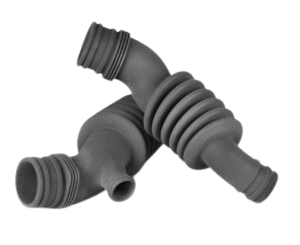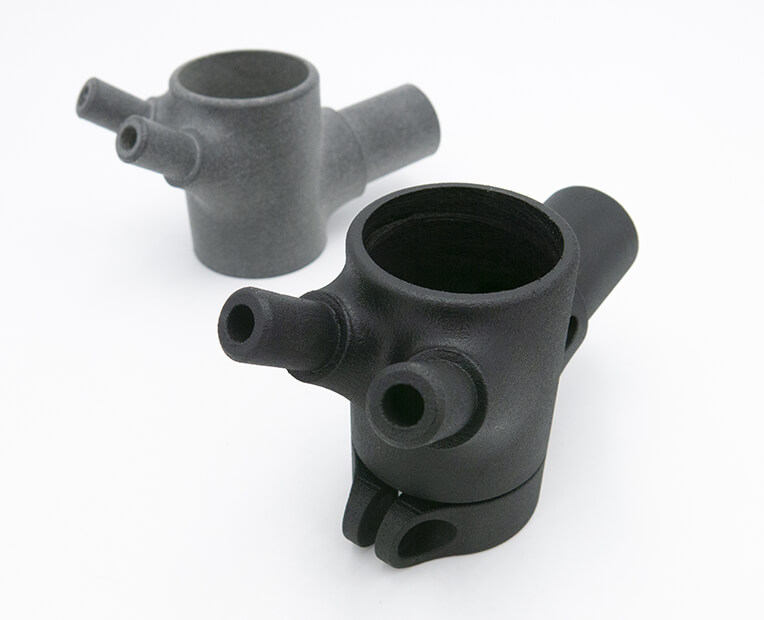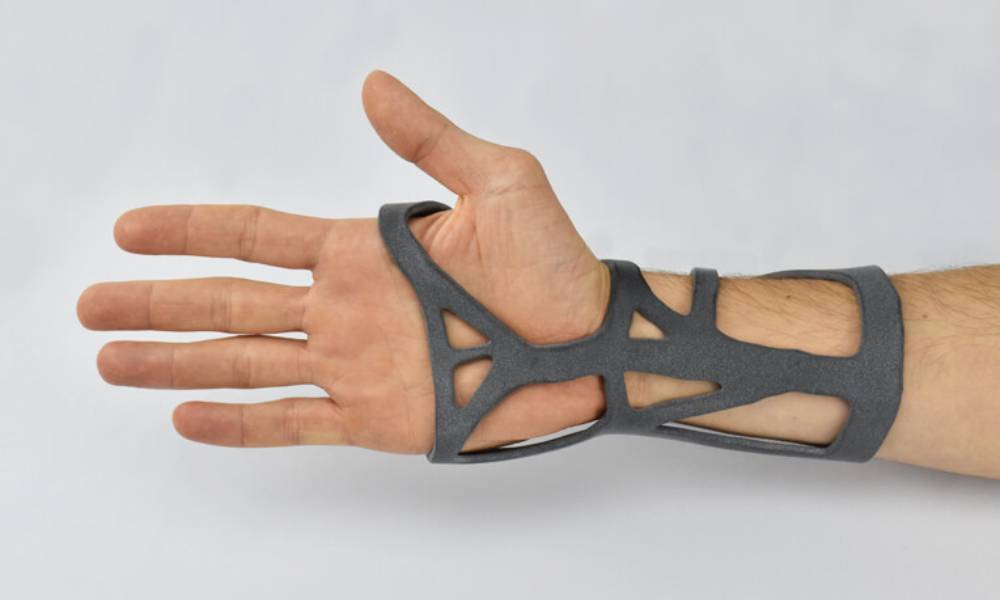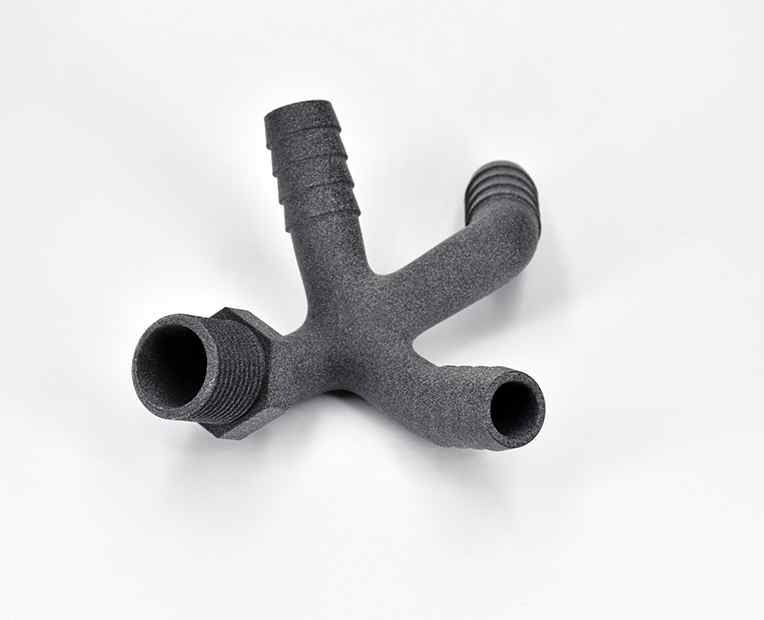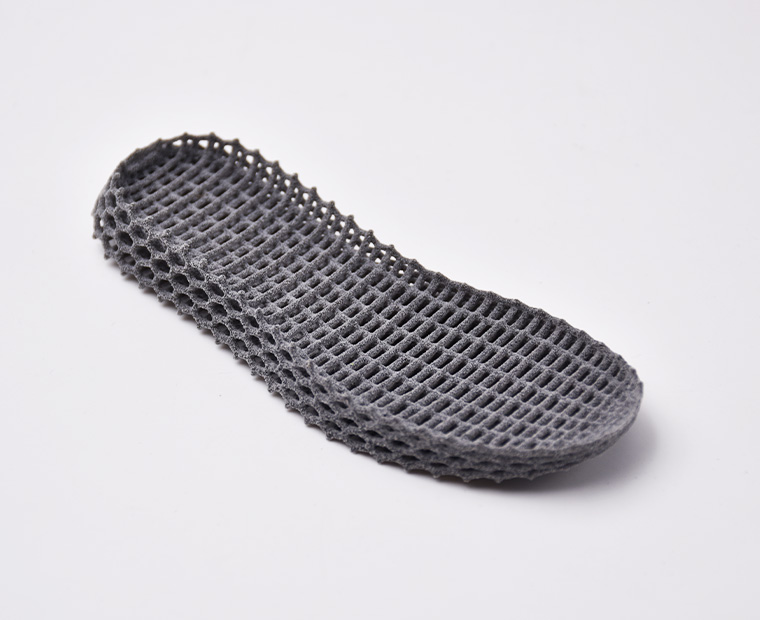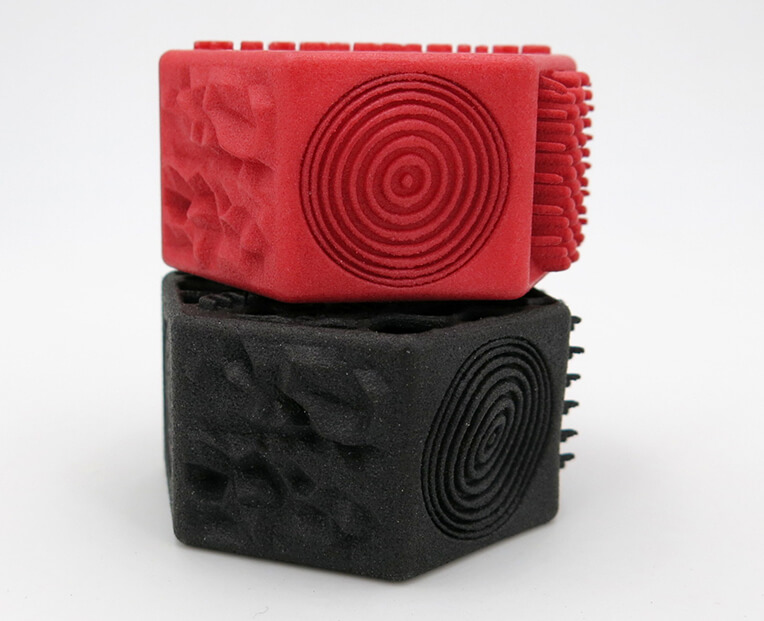In this process a fusing agent is applied on a material layer where the particles are destined to fuse together. Then a detailing agent is applied to modify the fusing and create fine detail and smooth surfaces. To finish, the area is exposed to the energy that will lead to reactions between the agents and the material to create the part.
When the printing process is complete, the build box is removed from the printer. An operator carefully extracts the parts from the build box and removes the remaining powder thanks to brushes and air blowers.
1 – Prepare your 3D file
The first step to start your
3D printing process is to create a
3D file (
STL file for example) of the part you need to create using a 3D printer. You can do this by using a 3D modeling software to create your object. Discover our selection of
free CAD software to develop your project.
Preparing your 3D file for
3D printing with MJF is crucial; you will need a printable 3D file. As a
3D printing service, we see a lot of unique 3D printing projects, but we also see a lot of errors rendering some files non-printable. It’s possible for your file to be printable but your part can break in no time, be deformed, or not come out of the 3D printer as expected. In this article, we will help you with 3D printing troubleshooting for the most
common 3D printing mistakes.
2- 3D printing process
First, the printer’s movable construction unit is inserted, and then, a thin coating of the powder material is deposited when the material recoater carriage advances across the construction area. As it moves across the build area, the printing and fusing carriage preheats the powder to a certain temperature to ensure material uniformity.
Agents are fused onto the powder bed in locations that match to the shape and characteristics of the component using a variety of inkjet nozzles. The construction unit retracts once each layer is complete to make room for the next layer of material to be deposited. Up till the project is finished, this process is repeated.
3- Post-processing
Move the build unit to the processing station after it has cooled, then vacuum the unfused powder. You can then use water, air, or bead blasting to remove any remaining powder. Post-processes can then be applied to the 3D-printed parts, such as polishing, dyeing, and many more.
The Multi Jet Fusion process is the fastest plastic 3D printing technology, perfect for prototyping or manufacturing. Multi Jet Fusion is great for both beginners and experienced professionals because of its high precision and low cost.
MJF sets itself apart from other additive manufacturing techniques because it is made to produce larger quantities of intricate and detailed parts. This is a great solution if you are looking for a manufacturing technique for the production of end-use parts. MJF can produce accurate electronic components, mechanical assemblies, enclosures, and jigs and fixtures.
In opposition to 3D printing technologies such as SLA or FDM, with HP MJF, you do not need supports for your part. Supports are not necessary with the powder bed system because the parts are efficiently nested in the build area. Additionally, you can reuse the leftover powder for additional print production runs after the part is finished.
If you want to production functional prototypes, or small production runs of end-use part, HP Multi Jet Fusion is a great alternative to SLS. MJF is an excellent choice if you’re creating components with intricate, multiple patterns that also include tiny aspects that must be durable.
MJF sets itself apart from other additive manufacturing techniques since it is made to manufacture larger quantities of intricate, detailed, and structurally sound items. MJF is a well-liked method for producing accurate and long-lasting housings for electronic components, enclosures, jigs and fixtures or even mechanical assembly.


 Connect with Google
Connect with Google Connect with Facebook
Connect with Facebook